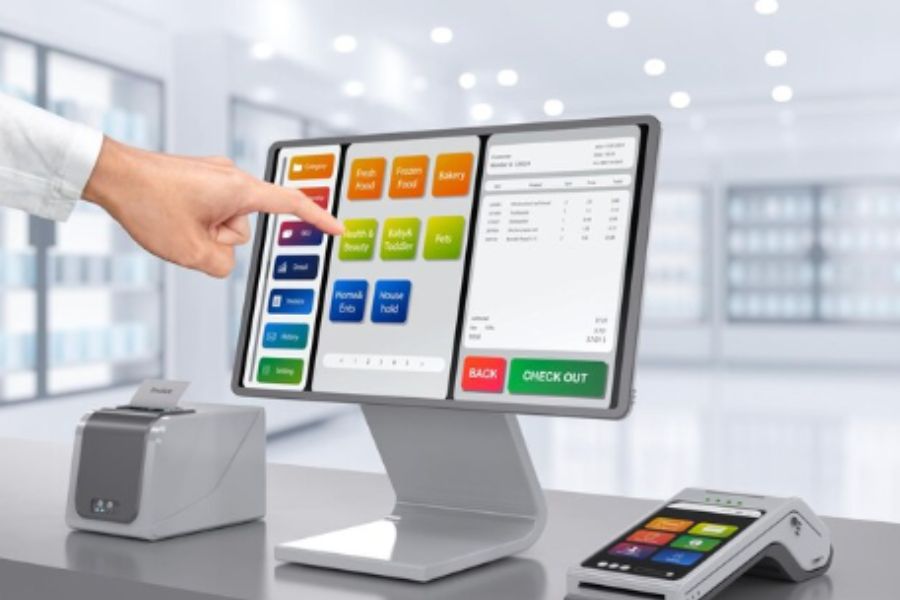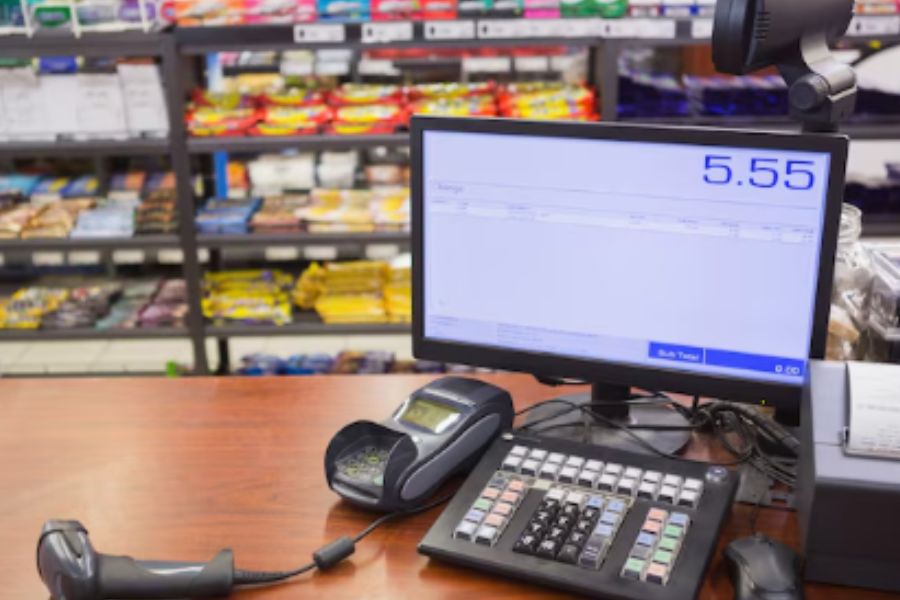Understanding the key metrics in your point of sale reports is not just beneficial; it’s imperative for driving revenue growth and staying ahead of the curve, especially in retail. These metrics provide invaluable insights into various aspects of your business operations, offering a roadmap for making informed decisions and optimizing performance to boost your bottom line.
What Are Point Of Sale Reports?
The POS software market is valued at nearly $12 billion and is projected to witness a compound annual growth rate (CAGR) of 10.8% from 2023 to 2030. Retail establishments are the predominant consumers of POS software, contributing over 34% of the total revenue.
A survey reveals that 51% of retailers regard POS transaction data as the most valuable source of information for their businesses. The utilization of the appropriate point of sale reports, backed by an efficient underlying system, holds the key to leveraging consumer data effectively, thereby influencing customer conversion and retention strategies.

- Analyze sales and related patterns: Point of sale (POS) reports offer a detailed analysis of sales data, including total sales volume, revenue generated, and average transaction value. Businesses can track sales trends over time, identify peak periods, and evaluate the success of marketing campaigns or promotions.
- Enhance inventory management: POS reports provide visibility into inventory levels, stock movement, and product performance. Businesses can monitor stock levels, identify slow-moving items, and optimize stock replenishment strategies to ensure product availability and minimize carrying costs.
- Gain insightful customer data: POS reports capture valuable data on customer behavior, preferences, and purchasing patterns. By analyzing customer insights, businesses can tailor marketing initiatives, personalize promotions, and enhance the overall customer experience to foster loyalty and drive repeat business.
- Monitor employee performance and make adjustments: Point of sale reports enable businesses to track employee performance, productivity, and sales metrics. By monitoring employee performance, businesses can identify top performers, track sales goals, and implement strategies to improve workforce efficiency and customer service quality.
- Analyze business finance: POS reports offer financial analysis tools, including gross margin analysis, profit margins, and return on investment (ROI). Businesses can evaluate profitability, identify areas of cost inefficiency, and make data-driven decisions to improve overall financial performance.
Why Do Retailers Need Point of Sale Reporting?
Point of sale reports are one of the most important tools to help retailers supervise their business and make informed decisions.
- Sales Optimization: POS reporting provides retailers with detailed insights into their sales performance, including total sales, revenue generated, and average transaction value. By analyzing this data, retailers can identify trends, assess the effectiveness of marketing strategies, and optimize sales tactics to maximize revenue.
- Inventory Management: These reports offer retailers visibility into their inventory levels, stock movement, and product performance. This data allows retailers to manage their inventory efficiently, prevent stockouts, minimize carrying costs, and ensure that popular items are always in stock to meet customer demand.
- Customer Insights: Point of sale reports capture valuable information about customer behavior, preferences, and purchasing patterns. Retailers can use this data to personalize marketing efforts, tailor promotions to specific customer segments, and enhance the overall shopping experience to drive customer loyalty and increase repeat business.
- Employee Performance Tracking: POS reporting enables retailers to monitor employee performance, productivity, and sales metrics. By tracking key performance indicators (KPIs), retailers can identify top-performing employees, provide targeted training or incentives, and ensure that staff are delivering exceptional customer service to drive sales and satisfaction.
- Financial Analysis: These reports provide retailers with financial analysis tools to evaluate profitability, assess costs, and make data-driven decisions to improve financial performance. By analyzing metrics such as gross margin, profit margins, and return on investment (ROI), retailers can identify areas for cost savings, optimize pricing strategies, and maximize overall profitability.
Key Metrics In Point Of Sales Reports
Depending on your business type and demand, a point of sale report may include various metrics. However, here are the key metrics that any report should have.
Sales And Revenue
Sales and revenue metrics form the cornerstone of every POS report, offering a glimpse into a business’s financial health. They track total sales, revenue generated, and average transaction value, providing a comprehensive overview of financial performance.
Analyzing sales trends over time enables businesses to pinpoint peak periods, track fluctuations, and evaluate the impact of marketing campaigns or promotions.
Moreover, segmenting sales data by product categories or individual items can unveil insights into top-performing products and identify areas with growth potential. This granular analysis allows businesses to make informed decisions about inventory management, pricing strategies, and product promotions.
Inventory And Stock
Effective inventory management is crucial for maintaining optimal stock levels, minimizing stockouts, and avoiding overstock situations. Point of sale reports provide valuable insights into inventory turnover rates, stock levels, and product performance. Businesses can identify slow-moving items, anticipate demand fluctuations, and optimize stock replenishment strategies.
This proactive approach helps minimize carrying costs and maximize inventory efficiency. Additionally, by leveraging POS reports to analyze product performance and identify trends, businesses can make informed decisions about inventory adjustments, pricing strategies, and promotional activities.
By aligning inventory levels with customer demand and market trends, businesses can improve cash flow, reduce wastage, and enhance overall profitability.
Customer And Loyalty
Customer satisfaction and loyalty play pivotal roles in securing long-term success in the retail industry. Point of sale reports serve as valuable tools by offering insights into customer behavior, preferences, and purchasing patterns. Metrics like customer acquisition cost, repeat purchase rate, and average customer spending provide valuable insights into customer loyalty and retention efforts.
Businesses can leverage this data by segmenting customer information and analyzing trends to tailor marketing initiatives, personalize promotions, and enhance the overall shopping experience.
By understanding customer preferences and behavior, businesses can foster stronger relationships with their clientele, driving repeat business and cultivating brand loyalty.
Employee And Labor
Efficient labor cost management is crucial for profitability. POS reports provide insights into employee performance and productivity, allowing businesses to optimize staffing and allocate resources effectively.
Aligning staffing with customer demand improves service quality while controlling labor costs. Analyzing employee performance metrics identifies areas for improvement and enhances productivity. This proactive labor management approach boosts operational effectiveness and fosters a positive work environment and customer experience.
Expenses And Profit
Understanding the relationship between expenses and profitability is crucial for sustainable growth. Point of sale reports provide insights into various expenses, such as overhead costs, operating expenses, and the cost of goods sold (COGS). These reports enable businesses to analyze key financial metrics like gross margin, net profit margin, and return on investment (ROI) to evaluate profitability accurately.
By delving into these metrics, businesses can identify areas of cost inefficiency and make data-driven decisions to enhance overall financial performance. This analytical approach helps in optimizing expenses, increasing profitability, and laying the foundation for long-term growth and success.
How ConnectPOS Can Help You With Point Of Sale Reports To Boost Your Revenue
ConnectPOS offers a robust solution tailored to businesses seeking to drive revenue through data-driven insights.
Here’s how point of sale reports from ConnectPOS can benefit your business:
Real-time monitoring of multiple stores and registers
Stay updated with daily reports providing real-time sales, order, and inventory information across various touchpoints.
- Effortlessly track data generated by sales operations via a centralized dashboard.
- Tailor data viewing by selecting specific stores and relevant ecommerce platforms.
- Simplify cross-regional management by converting all data into the chosen currency.
Efficient inventory management
Ensure optimal inventory levels to prevent overstocking or stockouts, with real-time visibility and streamlined order fulfillment processes.
- Keep track of inventory movements, including starting and ending quantities, purchases, sales, transfers, and stocktakes.
- Evaluate inventory performance for each product, analyzing potential profit revenue, profits, and margins.
- Foster stronger relationships with customers and suppliers through accurate and timely POS analytics.
Enhanced sales prevention through comprehensive data analytics
Utilize advanced analytics tools to understand buying patterns and monitor stock levels closely, minimizing lost sales opportunities.
- Harness historical sales data to forecast future demand accurately.
- Identify popular products both in-store and online, as well as products contributing to lost sales.
- Leverage historical data to tailor marketing strategies and offer personalized recommendations.
Customizable reporting and comparison
Access tailored reports providing detailed insights, enabling the identification of trends, outliers, and opportunities specific to your business.
- Customize report views based on Day, Month, Custom date, or Compare date options such as Last X Day, Week, Month, or Year.
- Enhance transparency by segregating data between online and in-store channels.
- Choose specific reports to display on the dashboard, including customer, discount, and refund reports.
FAQs About Point Of Sale Reports
- How Often Should POS Reports Be Generated?
The frequency of generating POS reports depends on the specific needs and requirements of your business. However, it’s generally recommended to generate POS reports daily or at the end of each business day to ensure accurate and up-to-date insights into sales, inventory, and other key metrics.
- Can POS Reports Be Customized?
Yes, most modern POS systems offer customization options for reports. Businesses can typically tailor reports to include specific data points, time frames, or metrics relevant to their operations. This customization allows businesses to gain insights tailored to their unique needs and preferences.
- How Do POS Reports Help In Inventory Management?
POS reports play a crucial role in inventory management by providing real-time insights into product sales, stock levels, and inventory turnover rates. By analyzing POS reports, businesses can identify trends, forecast demand, and make informed decisions regarding stock replenishment, pricing strategies, and product assortment.
- Are Point of Sale Reports Secure?
Yes, reputable POS systems prioritize data security to safeguard sensitive information contained within reports. This includes implementing encryption protocols, access controls, and other security measures to protect against unauthorized access, data breaches, and cyber threats.
- Can POS Reports Integrate With Other Business Systems?
Many modern POS systems offer integration capabilities, allowing them to seamlessly connect with other business systems, such as accounting software, inventory management systems, and customer relationship management (CRM) platforms. This integration streamlines data flow, improves operational efficiency, and facilitates more comprehensive business analytics and reporting.
Conclusion
Harnessing the power of key metrics in point of sale reports is a game-changer for retailers looking to enhance revenue streams and achieve sustainable growth. By effectively leveraging these insights, businesses can identify areas for improvement, optimize strategies, and deliver exceptional customer experiences that ultimately drive success in the competitive retail landscape.
Ready to maximize your retail business’s potential? Contact us today to embark on a journey to maximize your revenue with actionable insights from point of sale reports.



